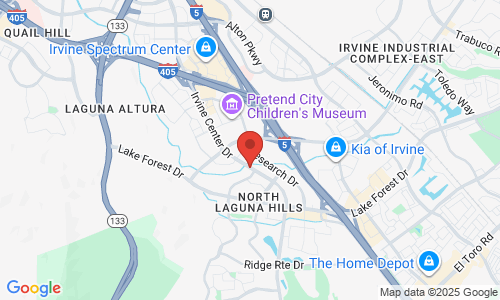Slip, Trip, and Fall Accidents: Cracked and Uneven Sidewalks
 Attorney Sean Burke has helped clients all over Orange County in a diverse array or personal injury cases. A number of serious disputes have involved premises liability lawsuits. In basic terms, premises liability lawsuits involve holding individuals and businesses accountable for injuries on their property. One source of injury that may be unexpected is poor sidewalk maintenance and uneven portions of the pavement. Let's consider these sorts of issues right now.
Attorney Sean Burke has helped clients all over Orange County in a diverse array or personal injury cases. A number of serious disputes have involved premises liability lawsuits. In basic terms, premises liability lawsuits involve holding individuals and businesses accountable for injuries on their property. One source of injury that may be unexpected is poor sidewalk maintenance and uneven portions of the pavement. Let's consider these sorts of issues right now.
Why Uneven Sidewalks Are a Potential Hazard
Not only are upraised and uneven sidewalks unsightly, they are also a potential cause of injury. You've no doubt noticed uneven concrete slabs on the sidewalk before, and sometimes they are worse in certain situations than others.
If you are jogging, an uneven sidewalk is more likely to cause a sprained or rolled ankle because of the sudden change in the level surface.
For people whose mobility issues restrict them to a wheelchair or electric scooter, these sidewalks are a major danger. Uneven sidewalks make it more likely for these people to fall over simply from trying to get around.
Even children on bikes and scooters are put at risk by these uneven sidewalks. While the sidewalk should be safer for children than being on the road, the sudden rise in a sidewalk slab can lead to children falling or being thrown from their bike or scooter.
Common Causes of Uneven Sidewalks and Damaged Pavement
The most common cause of uneven pavement is tree roots. If the roots are close to the surface rather than deep underground, they can push the concrete slabs up and cause uneven surfaces on the sidewalk.
Other potential causes of damaged and uneven sidewalks include poor/bad weather, lack of proper maintenance, and shoddy workmanship. Rather than upraised concrete, large cracks, loose pebbles, and exposed dirt are the main problems. Combining all of these factors could lead to a very hazardous sidewalk for everyone.
Injuries That May Be Sustained from Uneven Sidewalks
Some injuries that may be sustained from a trip or fall on uneven sidewalk include:
- Bumps and bruises
- Cuts and scrapes
- Sprains
- Pulled muscles
- Fractures
What Property Owners Should Do About These Problems
Many of these issues with uneven pavement can actually be avoided with proper planning.
For one, it's a good idea for property owners to research any trees that they place near the sidewalk. Certain kinds of trees may have bigger or thicker roots than others, making them less ideal for planting near concrete. Any trees planted should be placed sufficiently deep in order to prevent the roots from warping the sidewalk.
It's also important for property owners to have any damaged sidewalks worked on or regularly maintained. There are many contractors and crews that can be hired to do this. Professionals can remove an old sidewalk slab, trim down root structure of a nearby tree, and then place new sidewalk slabs as needed. This ensures an even surface and greater safety for people in the neighborhood.
Protecting Yourself from Potential Injury
The best way to prevent a serious mishap on uneven pavement is to be attentive. Be aware of your surroundings wherever you are. If you spot uneven pavement, be sure to avoid it by moving onto a lawn or onto the street. You can also, with good judgment, slow down and take these uneven spots slowly as needed.
Contact Our Personal Injury Lawyers
For more information about your legal options following a serious injury that comes as a result of damaged pavement, it's important that you contact our personal injury law firm today. Attorney Sean Burke and his team will fight diligently for you and your legal entitlements and will hold negligent property owners accountable for their actions.
